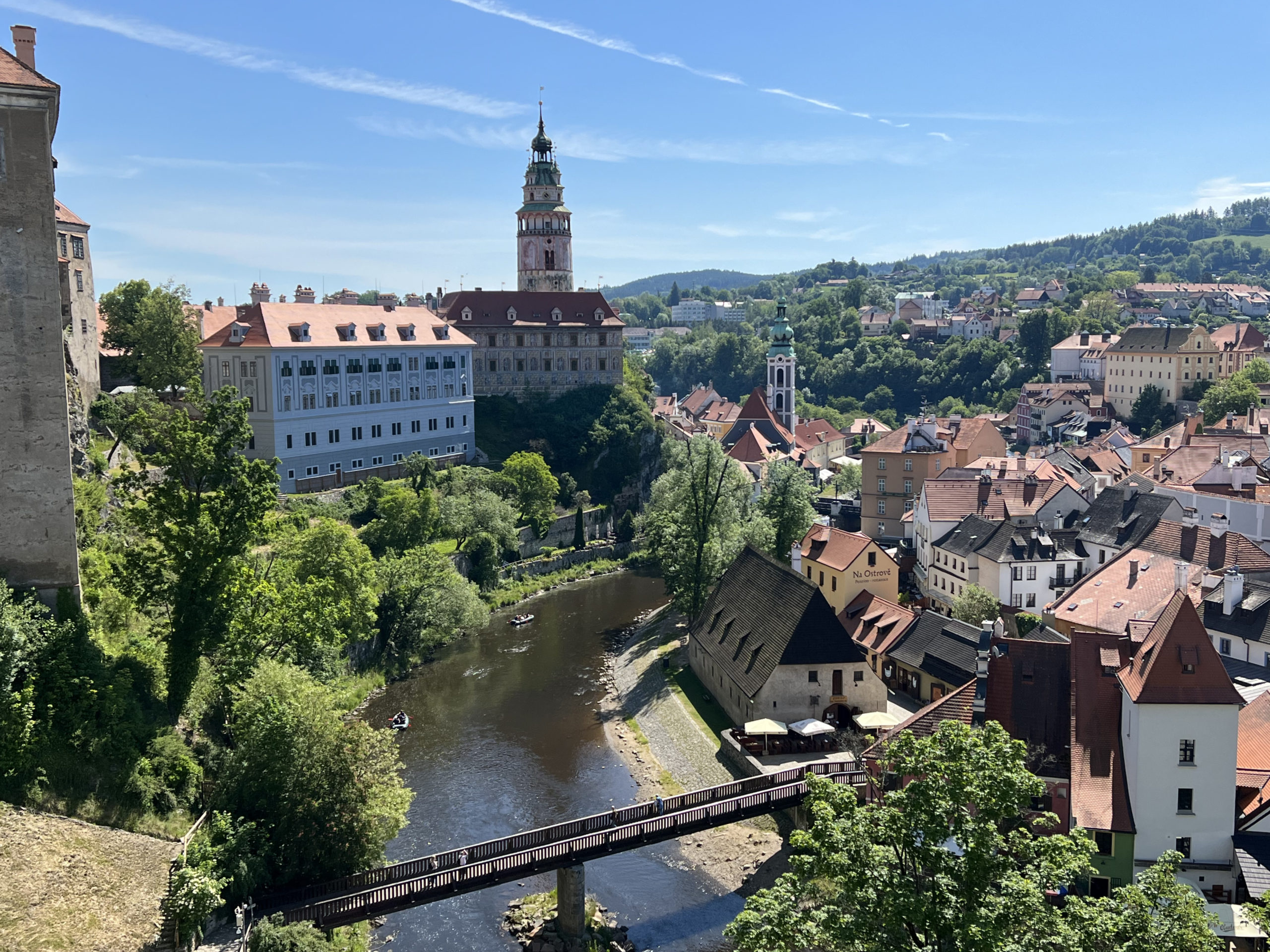
Cesky Krumlov Castle
Our next port of call was Linz, Austria. From there we took a bus to Cesky Krumlov, a small town by the Vltava River in the Czech Republic. It was a feudal town founded in the Middle Ages. It attracts tourists because of the Cesky Krumlov Castle complex, a UNESCO World Heritage Site. The first castle was established before 1250 by the Lords of Krumlov. This family line died off in 1302. Other families that followed included the Rosenbergs, who built the small castle and the upper castle; the Eggenbergs who designed the palace gardens; and the Schwarzenbergs, who reconstructed the Castle Theatre and the Cloak Bridge. The Schwarzenberg properties eventually became the property of the Czech Republic.
The castle area is one of the largest in central Europe. It is a complex of forty buildings and palaces, five castle courts and a castle park. Pictured below is the Upper Castle, built into a rock promontory along the Vltava River on one side and the Polečnice River on the other.
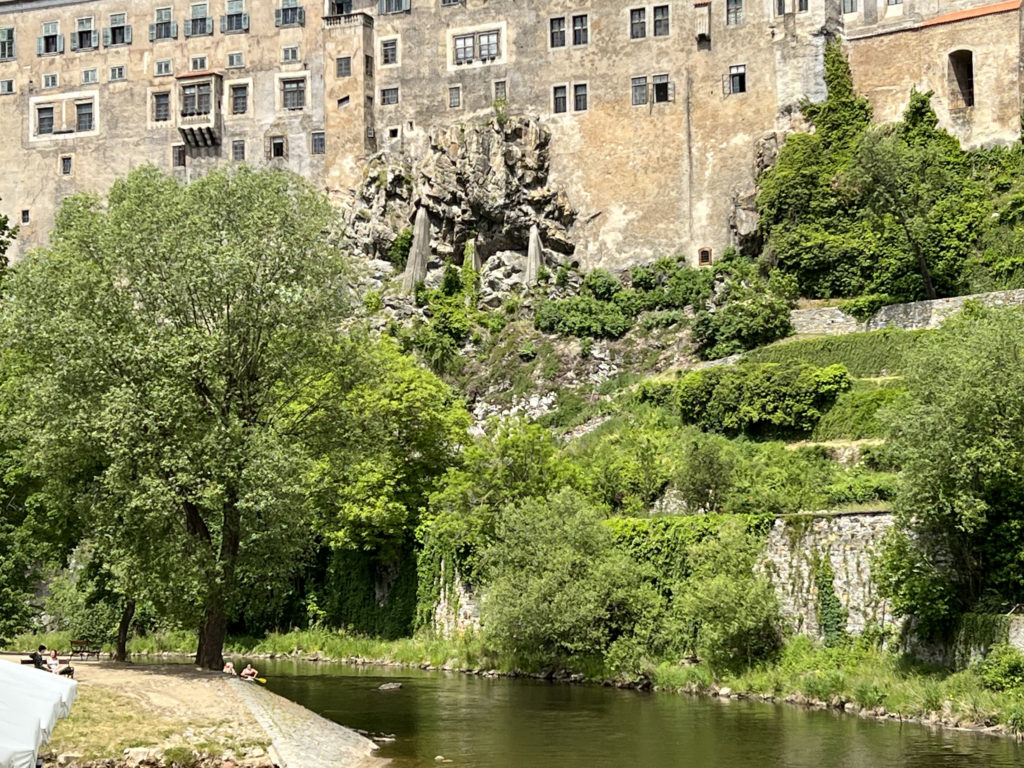
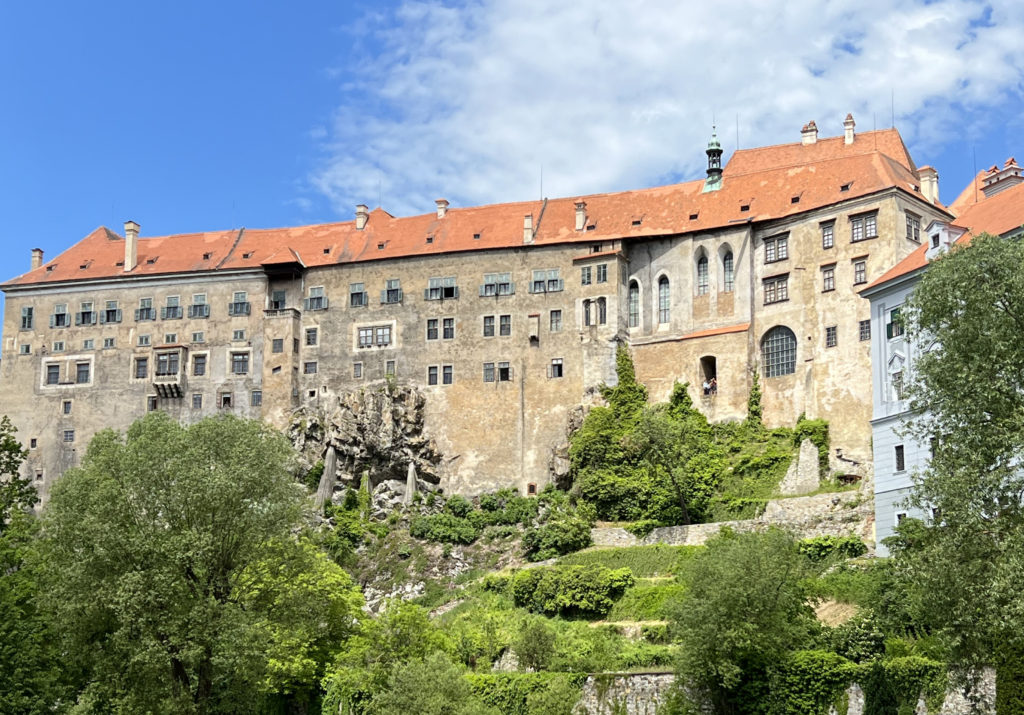
When we arrived at the castle complex, we walked across the Cloak Bridge. The open passage, which is where we walked, connects two courtyards of the palace. The closed floors connects the buildings on either side. The Cloak Bridge was built around 1777 and replaced an earlier wooden bridge. The bridge sits over a moat on massive stone pillars. We walked along the bridge and from there we walked to an overlook that provided beautiful views of the town below.
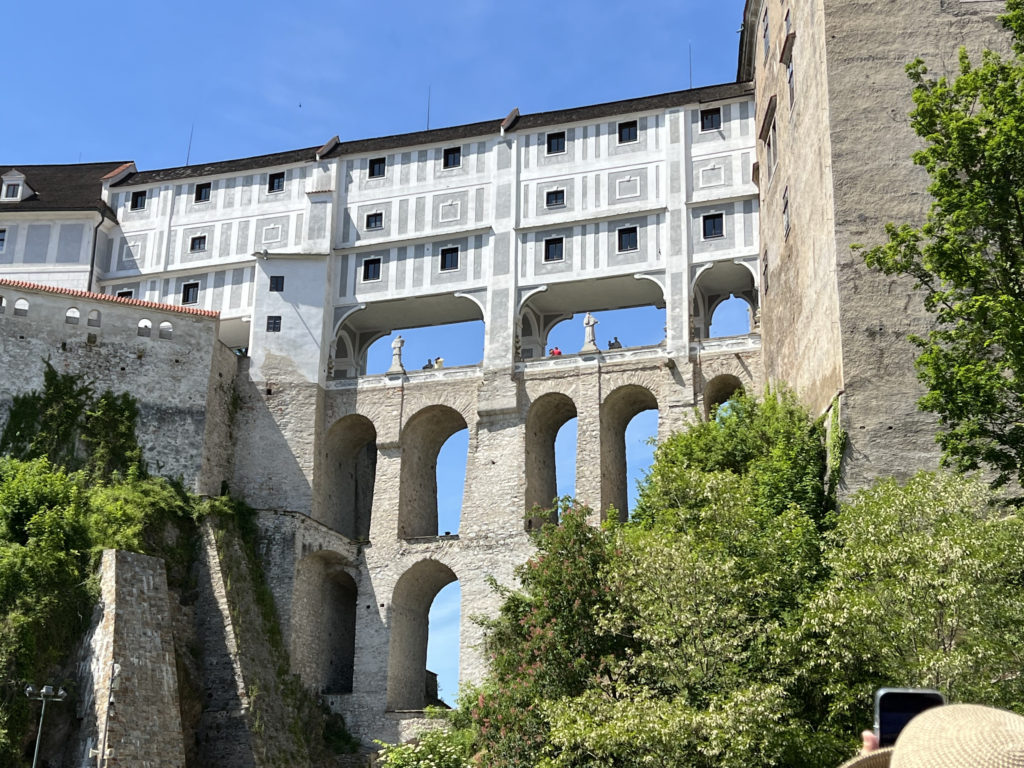
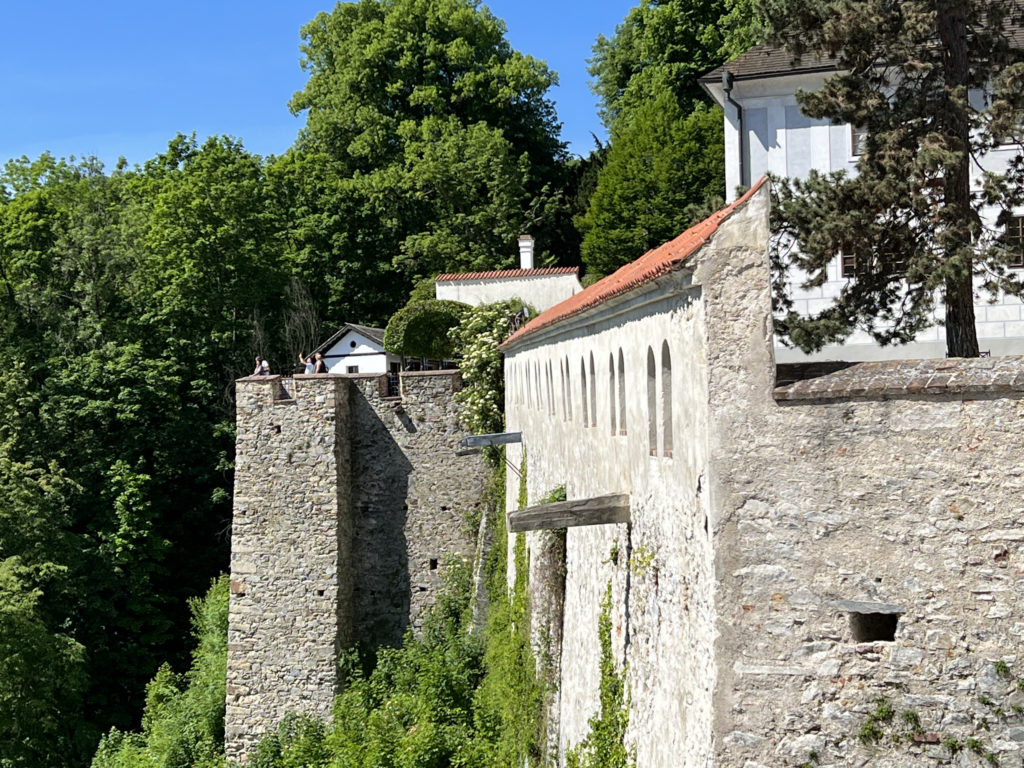
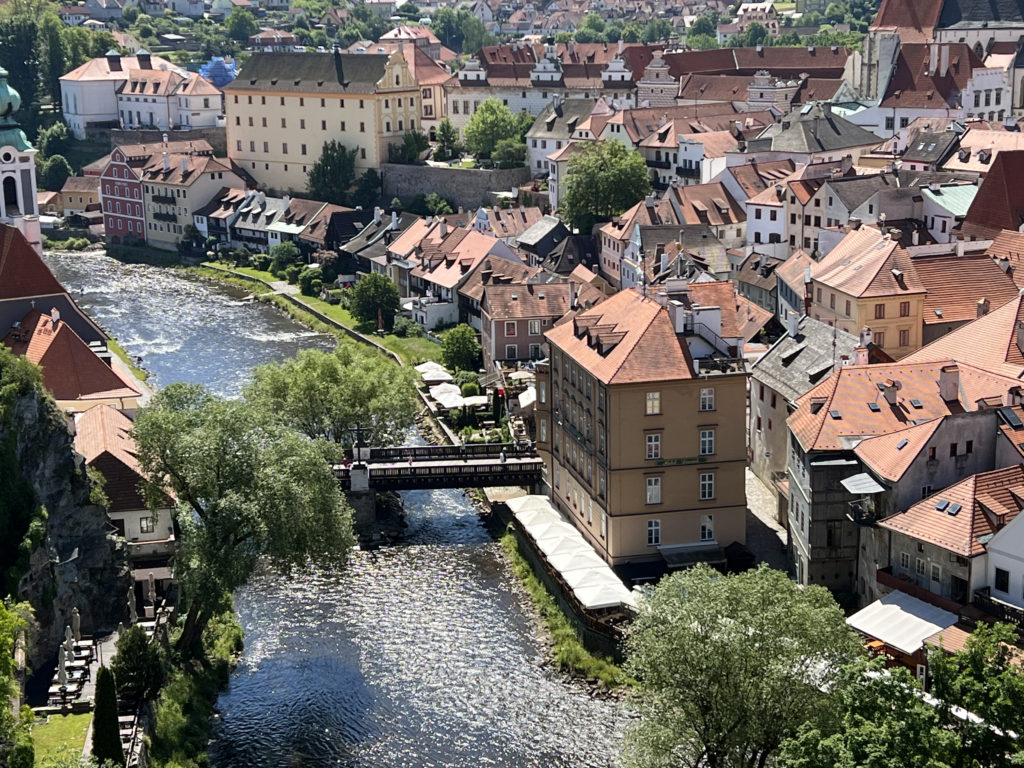
The oldest part of the castle complex is the “Small Castle.” It sits on steep rocks along the Vltava River. The Small Castle probably dates back to the mid 13th Century and originally served as a residence. After construction of the Upper Castle, the Small Castle served as a storage facility and as part of the fortification for the castle complex. There are decorative mural paintings on the castle’s facade. The Castle’s tower has six stories. There is a lantern with bells at the top of the tower.
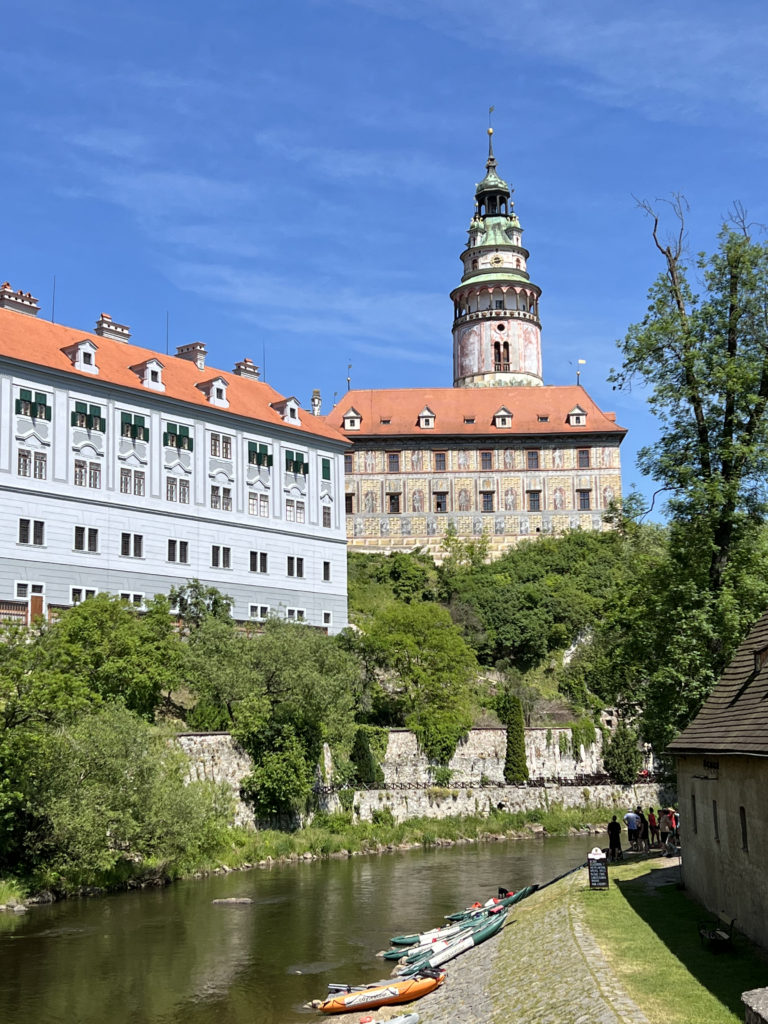


As we walked around the Cesky Krumlov complex, we saw some of the courtyards. The pictures below were taken in the Fourth Courtyard. If you look closely, you can see paintings decorate the castle walls. They are actually masonry that has been painted. The originals date back to 1580, but at some point they were plastered over. The plaster was removed and the work restored from 1910-1913. Additional restoration has also occurred, the most recent in 1997.
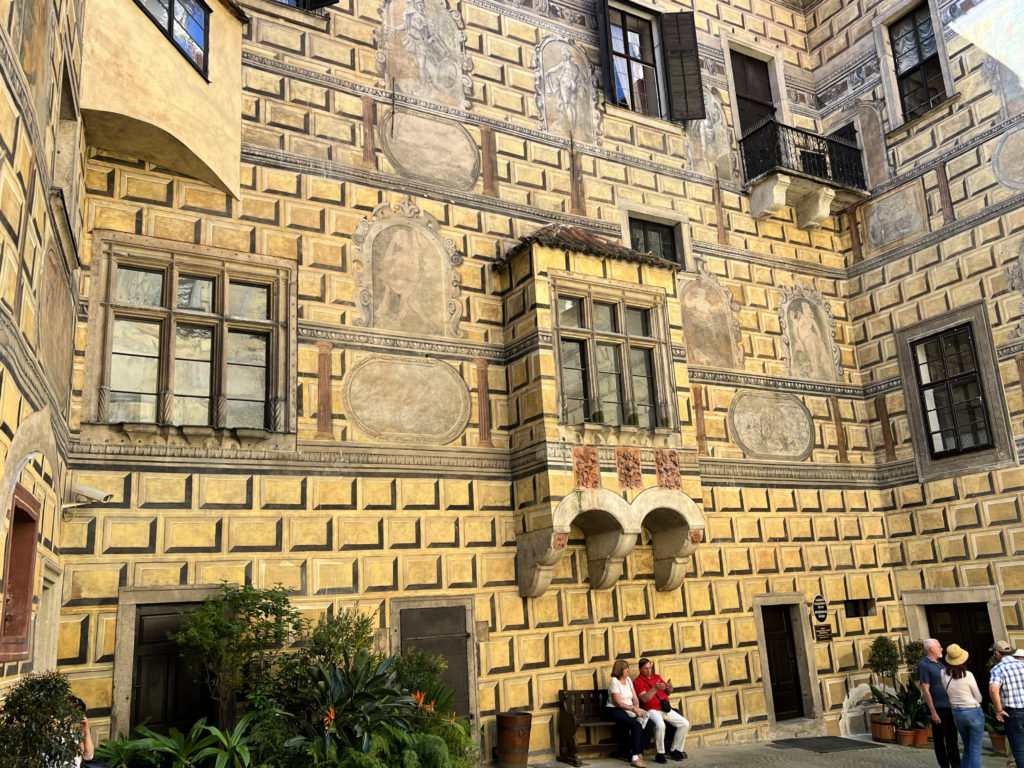

Some of the other things we saw during our castle tour were the Red Gate pictured below. It marks the entrance to the first courtyard. The gate dates back to 1748 and is named for its red paint. It sits within a stone archway. The next picture shows a gate into one of the inner courtyards of the castle. Cesky Krumlov also has a long history of having bears – there has been a bear moat since 1707. There are plans to renovate their habitat to improve the living conditions of the bears. The last picture is of a fountain surrounding the Plague Column. The Plague Column was erected during 1714-1716 in memory of those lost to the plague in the 1680s.
We could not take pictures inside the Cesky Krumlov Castle itself, but I do want to share a little about The Krumlov Castle Theatre. This building is preserved in its original condition. It is one of only two such theaters in Europe – the other is in Sweden. We were able to see the stage, auditorium, orchestra pit and stage machinery. Our guide demonstrated how the sound of rain, wind and thunder were simulated. It was very realistic.
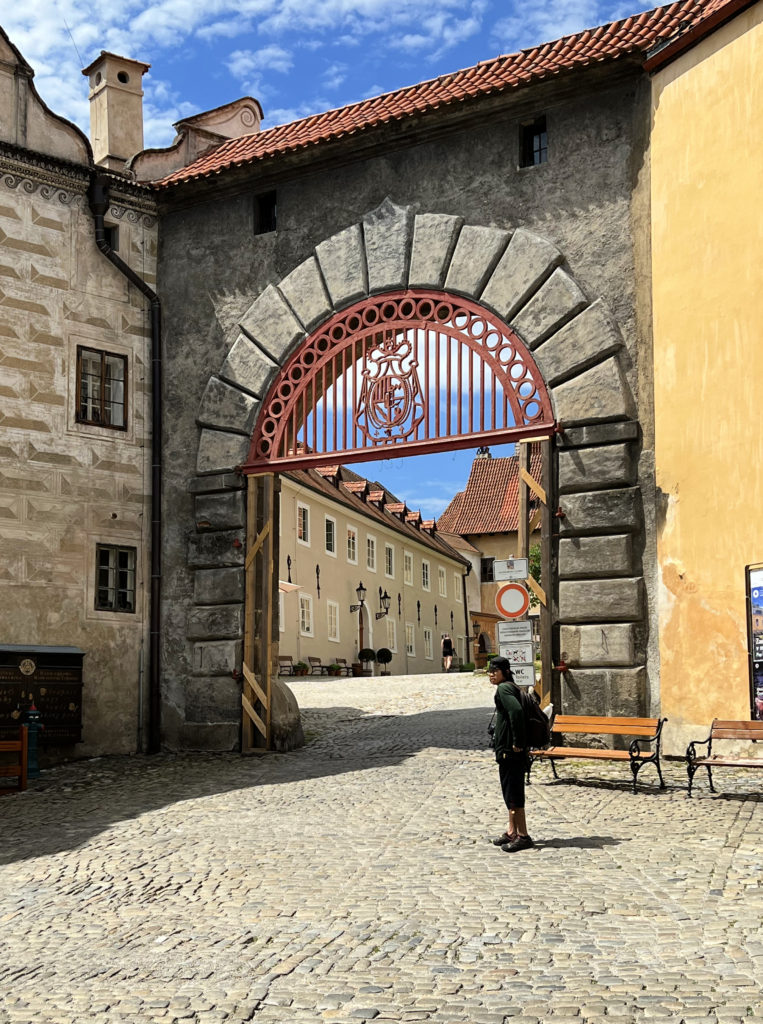
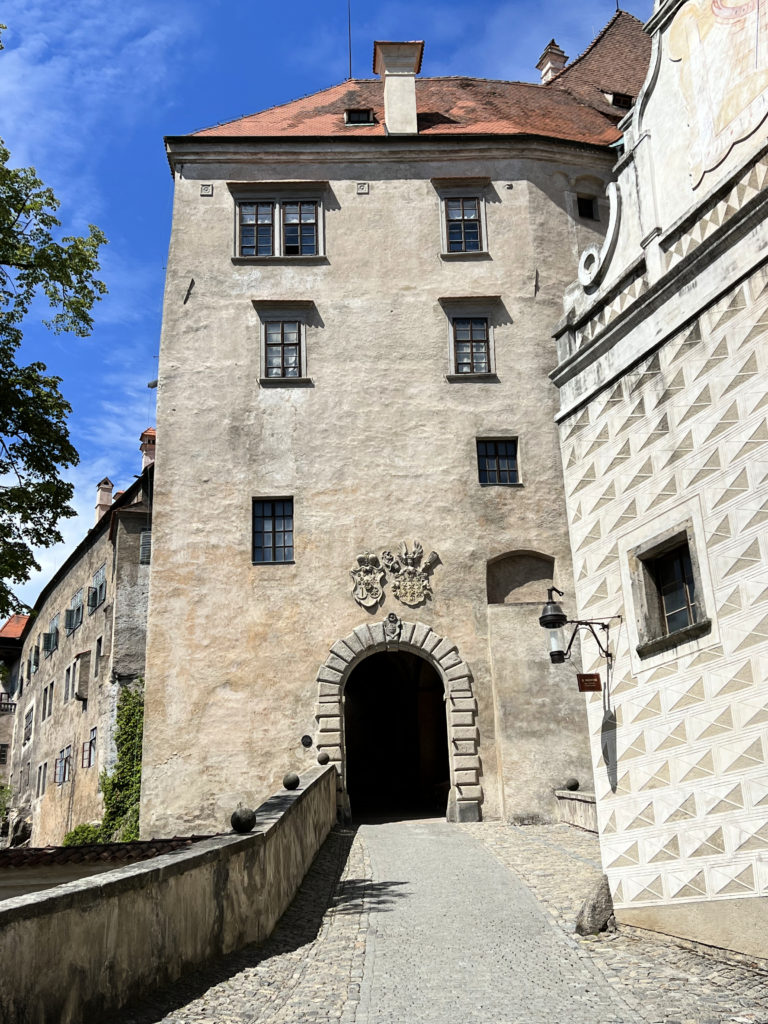
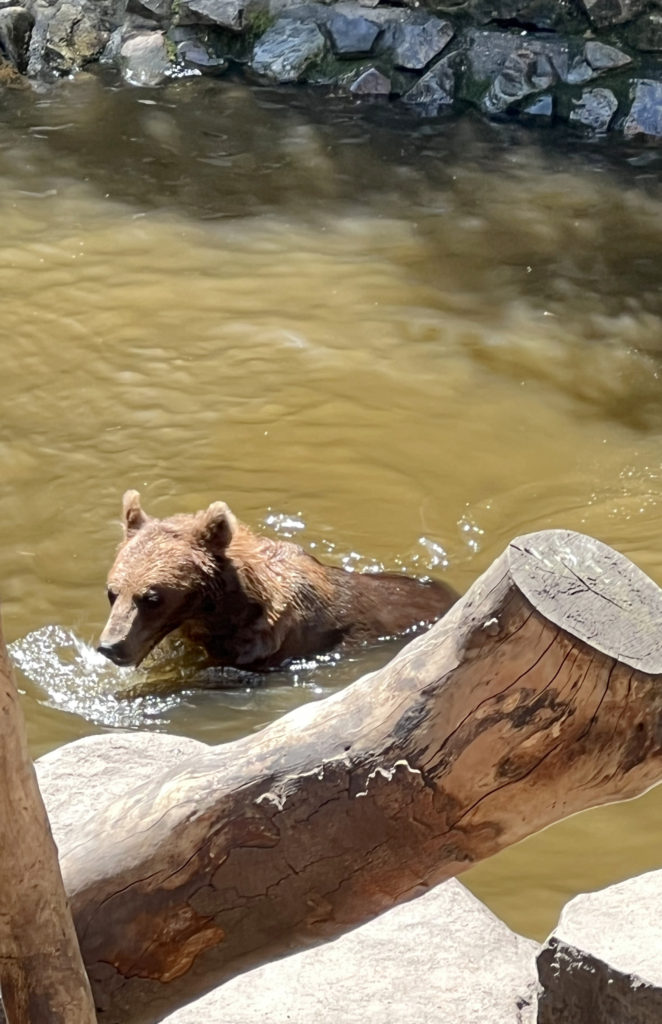
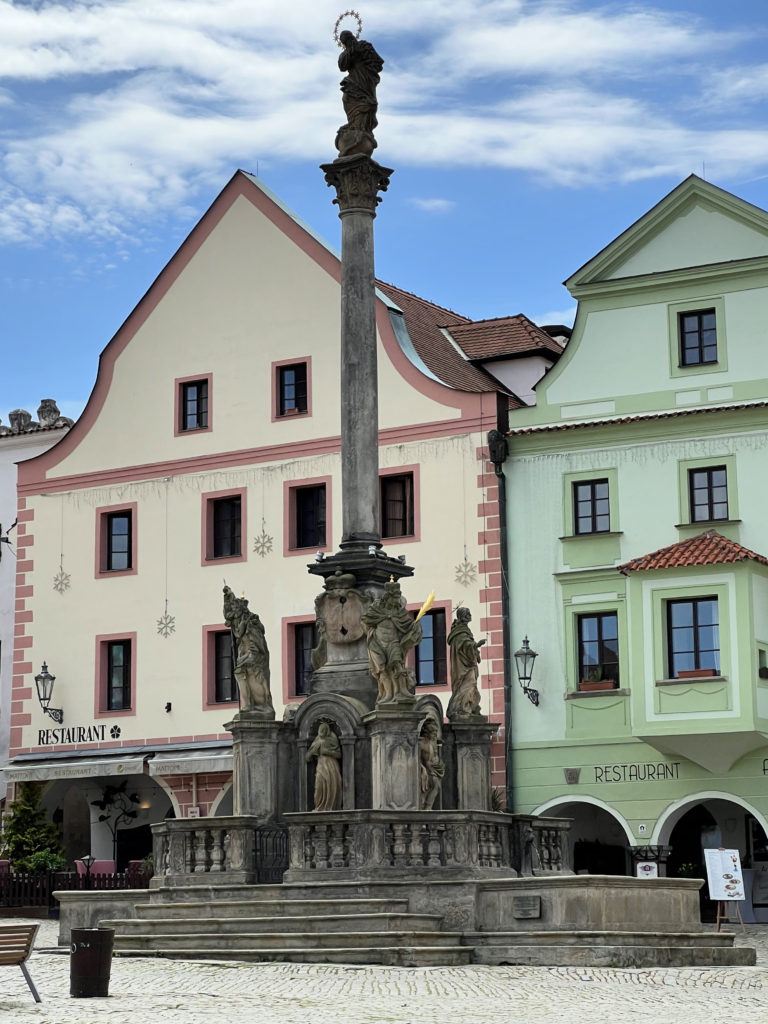
The Saint Vitus Church was built between 1407 and 1439, although modifications were made later. The main altar has a painting of St. Vitus and the Virgin Mary (1673-1683). Also pictured is the pulpit and organ pipes near the area for the choir. The organ is thought to date back to 1738. In 1995, the Church was declared part of the Czech Republic’s National Cultural Heritage. It shares prominence across the Cesky Krumlov skyline with the Castle Tower.
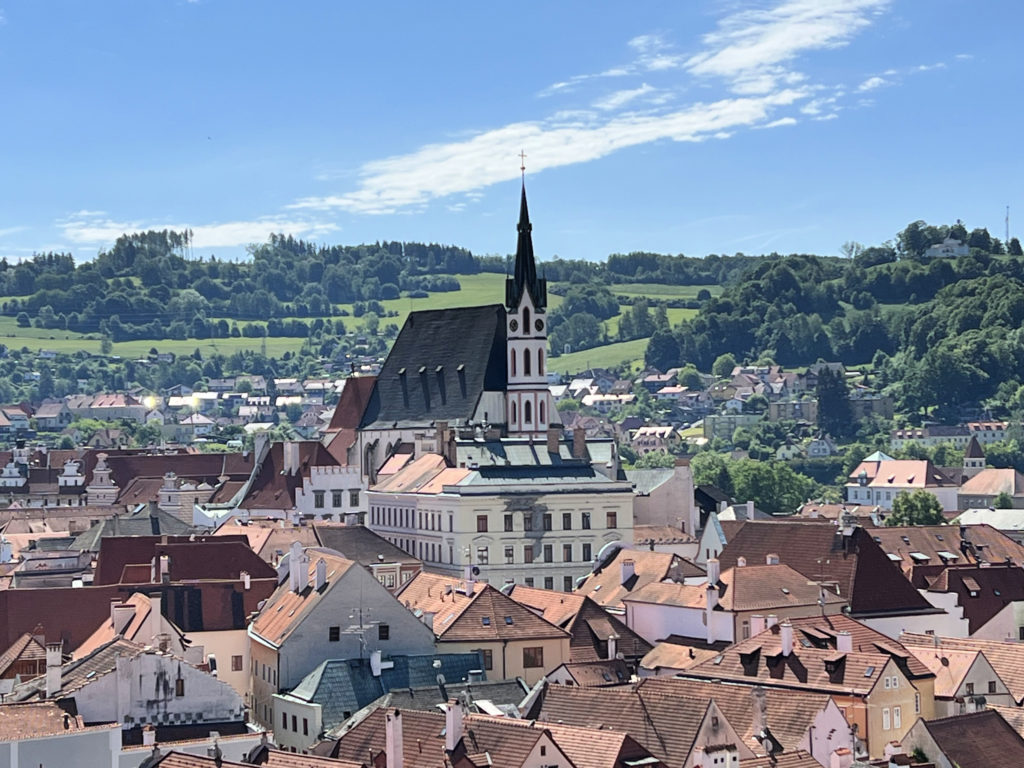
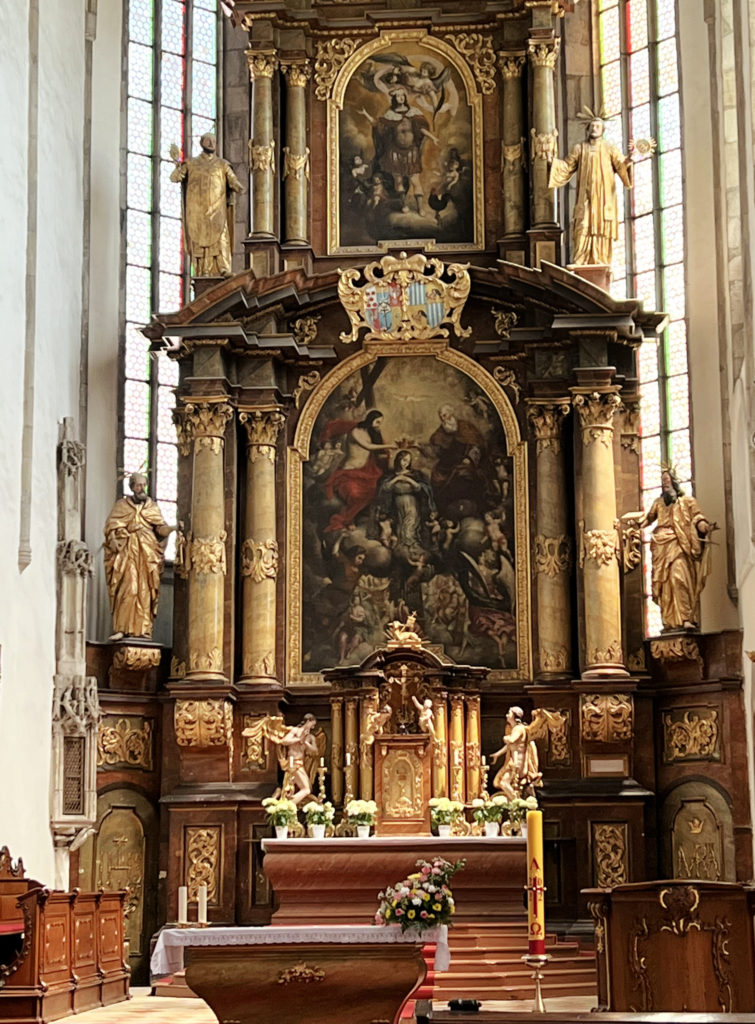
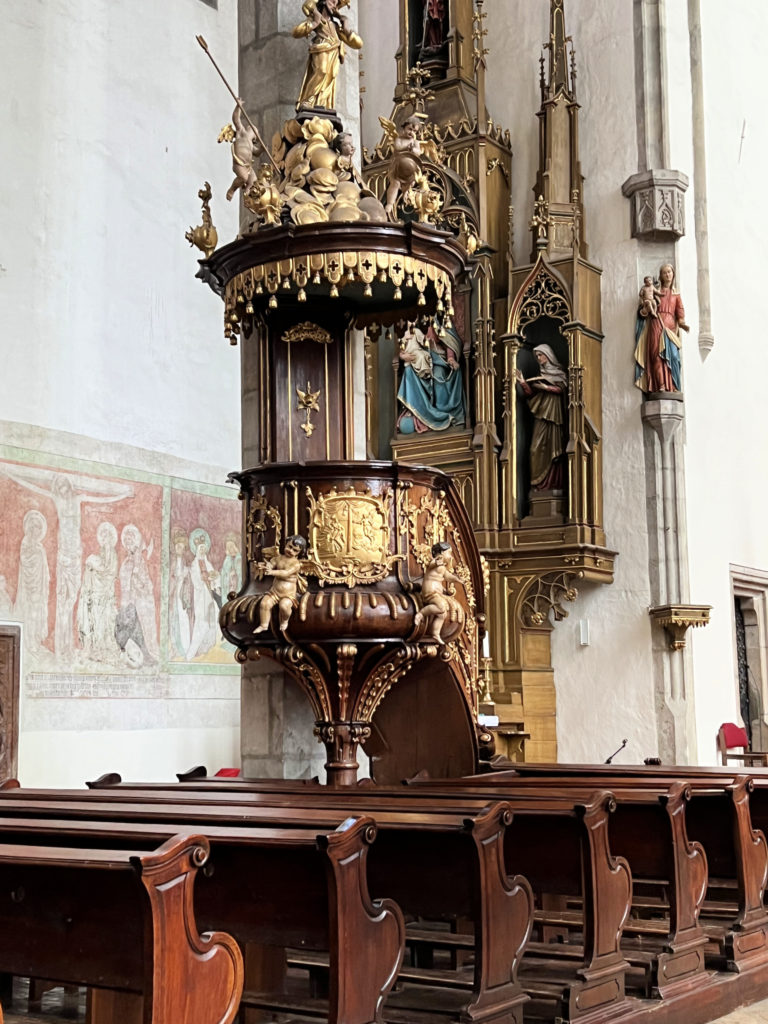
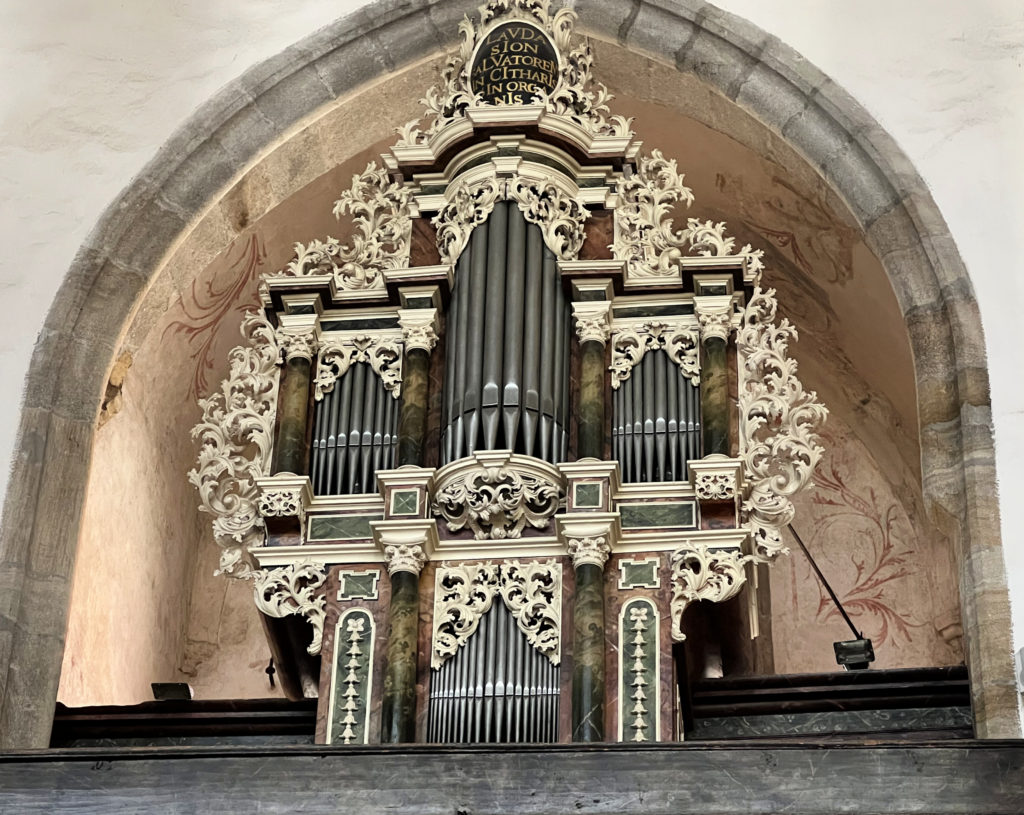
We enjoyed seeing the Cesky Krumlov Palace. Many of the interior rooms were beautiful and I wished we could have taken pictures. Below is another picture of the Cloak Bridge. We saw it from this vantage point as we were leaving.
